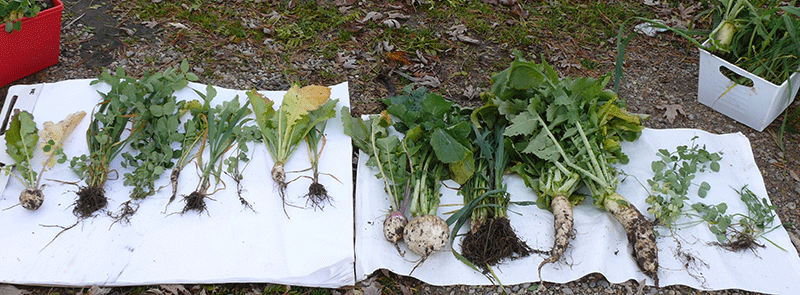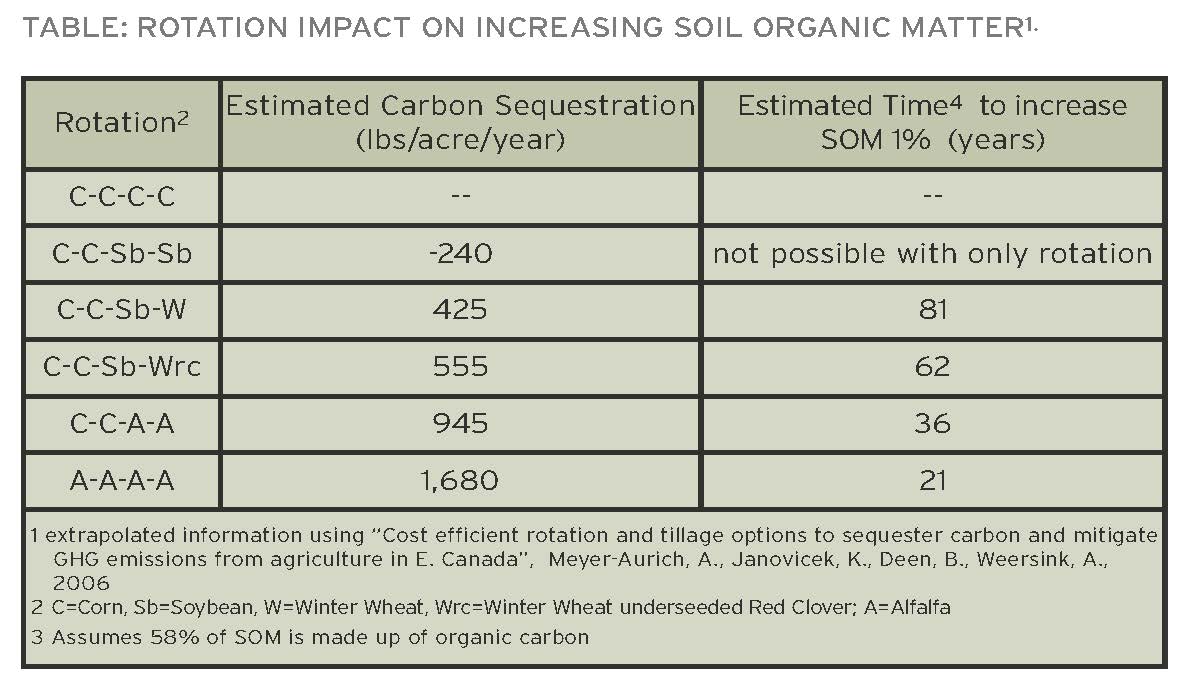Cropside: Sustaining soil
AGRONOMIC INFORMATION FROM ONTARIO'S CROP SPECIALISTS

IF THE ORGANIC matter levels of Ontario soils could be somehow magically increased by one percent, the impact would be significant. Beyond healthier soils and increased yields, Ontario farmers would observe better water infiltration and water holding capacity in their fields, and would observe less soil erosion and runoff.
PHOTO: AUGUST- PLANTED COVER CROP WITHOUT MANURE (LEFT) AND WITH MANURE (RIGHT).


A one percent increase in soil organic matter (SOM) would also go a long way to alleviate the phosphorus problem in the Great Lakes and could also help achieve carbon sequestration targets. A one percent increase in SOM would represent approximately 5.8 tons/ac of sequestered carbon …but getting to a one percent increase is not easy.
STEPS TO IMPROVING SOM
SOM levels took several generations to drop to current levels, and will take time to re-build. Even a 0.1% increase can lead to substantial soil health improvements. Any or all of the following practices will help increase soil organic matter.
• Longer rotations that include small grains, or forages
• Cover crops/winter cover
• Addition of manure or organic amendments
• Increased residue cover using reduced tillage practices
Combined practices will help increase SOM more quickly, and often there can be a synergistic effect. For example, Figure 1 shows the difference in cover crop biomass where manure has been applied. The manure feeds the micro-organisms in the soil, which in turn help to build a bigger root system, taking up nutrients that may otherwise disappear. The diversity in microbial populations adds aggregate stability and soil structure. Figure 2 illustrates the benefit of a bigger root system for nutrient cycling and extracting water in the soil.
IMPACT OF CROP ROTATION
Expanding corn-soybean rotations to include wheat (and potentially cover crops) has demonstrated economic benefit for increased yields in subsequent crops. Over $100/acre profit resulted where wheat was included in the rotation. A whole-rotation outlook revealed a two to six percent increase in corn yield and a nine to 14 percent increase in soybean yields combined with potential straw sales and reduced nitrogen requirements. As well, an opportunity for cover crops and spreading out field operations provided additional benefits, as evidenced by work done by Bill Deen, with the University of Guelph. Research evaluating crop rotations for potential carbon sequestration also shows encouraging results.
Table 1 extrapolates carbon sequestration data measured in a 2006 U. of Guelph (Deen, et al.) study, to show the relative timelines required to reach a one percent increase in SOM. The research confirmed that a corn-soybean rotation on its own is not likely to increase SOM, and that a rotation that includes alfalfa forages can help reach the one percent increase more quickly.
The numbers are intended only to give a relative comparison. The research compared continuous corn to other rotations under conventional tillage. The study also measured and estimated the carbon (CO2 equivalent) emissions that went into growing the crop (including emissions from direct and indirect energy use as well as N2O emissions from crop residue, fertilizer, N-fixation). Although carbon sequestration will help build SOM, carbon emissions from crop inputs and field activities can still be high.
KEYS TO BUILDING ORGANIC MATTER
So how can you work to achieve that magical one percent increase in SOM? It won’t happen overnight, however implementing crop rotations that include more crops (such as wheat, barley, oats, and/or forages), adding organic amendments, integrating cover crops, and increasing over-winter crop residue using reduced tillage will add carbon, feed the soil bugs, and will lead to improved SOM more quickly. •

















